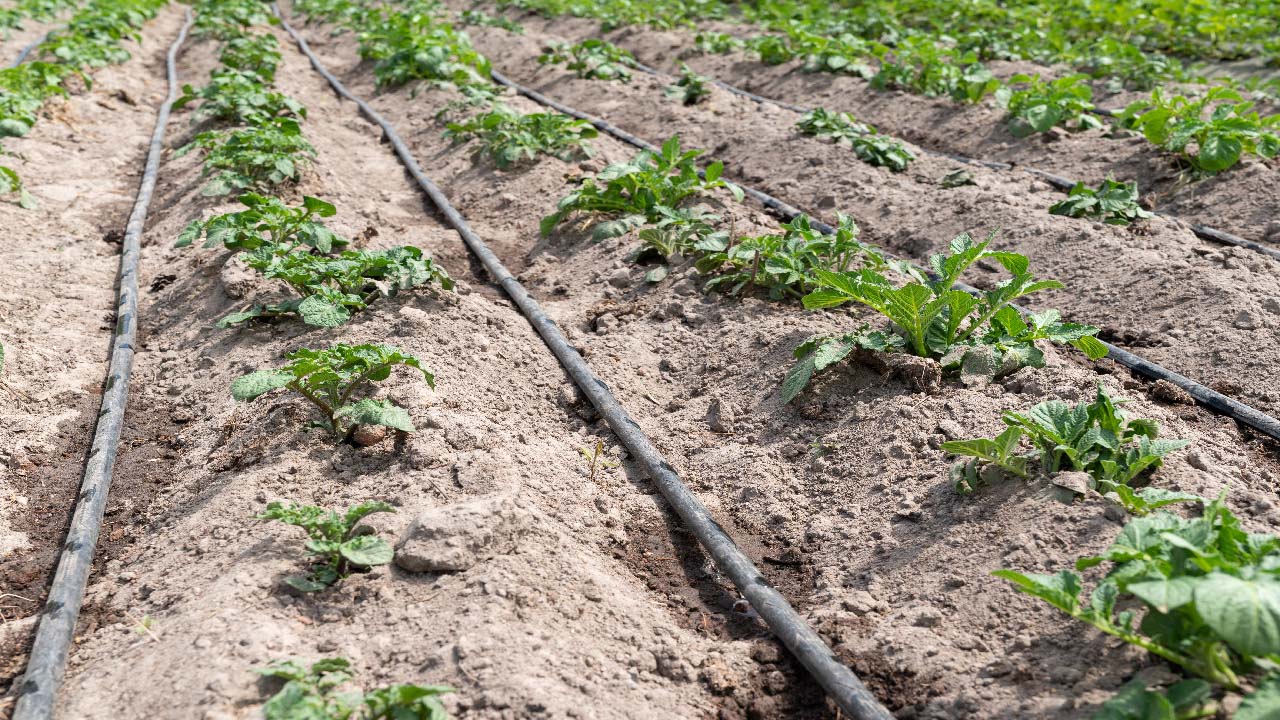How to Repair Drip Irrigation Tubing
Sep 21st 2023
Wondering how to repair drip irrigation tubing? An excellent tool for the farm and garden, drip irrigation offers one of the best ways to keep your plants growing healthy and strong all season long. If your irrigation tubing gets a hole or tear, all is not lost. There are a few easy ways to repair broken drip irrigation tubing. Whether you are dealing with intensive damage from an animal, a run-in with a lawn mower, or even a simple clog, read on to discover how you can fix your drip irrigation line, or whether it is finally time for a replacement. Learn all about the possible issues with drip tubing you may run into.
Burying your drip irrigation line can prevent many potential issues, though it isn't foolproof. Burrowing rodents can create problems and cause animal damage, and it is much harder to identify where the issue is located if the drip line is buried. You can protect above-ground tubing by investing in a few simple hold-downs to keep the line exactly where you want it. Prevention is key, so be sure to utilize proper winterization practices to ensure you don't run into any issues come spring. This includes draining your drip irrigation system every fall before it freezes. Mulching over your irrigation system is also a good way to keep it insulated.
Small Breaks
If there is a small leak, the first step is to find the source of the breakage. Common signs include puddles of water and low or no water pressure, especially later on in the line. If you find a kink in the line, you need only to untwist it and you're good to go. Some kinks require you to lay the tubing as flat as possible and let it sit under the sun to soften and then allow the system to run for a minute or two. If this does not fix the kink, cut into the mainline and remove the kinked section, and add a coupler.
If you find a small hole, a goof plug may be the simplest solution. This also works for plugging holes you no longer need to utilize. If the broken area is less than 2 inches wide, it is a relatively easy fix. You will need a pair of sharp scissors or a tube cutting tool and a coupler fitting like the easy-loc coupler here, designed to repair small breaks in the line and reconnect broken tubing.
How to Use an Easy Loc Coupler?
Begin by cutting out the ripped or broken part of the tubing. Make sure your cuts are even and clean for the best results. 1.Turn the locking nuts on the Easy Loc fitting backwards to expose the barb. 2. Then slide the tubing onto the barb 3. Then tighten the locking nut by turning it and locking the tubing in place. Give it a tug to make sure it is secure. Follow these steps on the remaining tubing on the other end of the coupler and you are good to go.
Larger Breaks
For bigger tears or rips in your drip irrigation system, you will need two couplers instead of only one and an additional section of the same or similar tubing. Just like with the small break, you will begin by cutting out the bad section. Cut the section of extra tubing to match the length you are removing. Finally, use the couplers to join the extra section to your main line. In some cases, replacing the whole run of tubing is needed.
Clogged Driplines
If your emitters or drip lines get clogged, irrigation function can be seriously impaired. Certain signs of clogging can include dry spots, uneven plant growth or a lack of water in specific areas. To prevent clogs in the first place, it can be extremely useful to add a filter at the beginning of your irrigation system. This will help catch debris and sediment before it can enter the system. Even if you think you have clean water, it is a good idea to add a filter to your drip irrigation system. The first step towards removing a clog is to flush the entire irrigation system. Adding flush values to the end of your drip line instead of end caps can help ensure it drains after every use. If this doesn't fix the problem, you may want to consider cleaning each emitter individually. Select emitters and sprayers that can be easily taken apart for cleaning if your system is prone to clogging. There are several emitters available at DripWorks that make it easy to clean and reuse, like the Take-Apart Flag emitters or the Shrubblers. An emitter or dripline too clogged to clean may require replacement.
Pressure Damage
Pressure regulators are an important part of keeping your drip irrigation system running smoothly. Insufficient pressure can lead to compromised plant growth. Pressure that is too high can actually damage the irrigation system. Emitters may squirt water or even pop out of their location. If this happens, your emitters or tubing may have to be replaced. Investing in a pressure regulator will be your best option because it can reduce incoming pressure.
Irrigation is well worth the investment and like many other things will require some maintenance. A few simple steps like adding proper filtration, reducing high pressure, and selecting the right products, will ensure that your system is running smoothly for many years. If any damage were to occur to your mainline tubing, just follow the simple steps to get the system fixed and running again.
If you have any questions or need help with selecting the right products for your drip system, check out DripWorks.com. They have top quality products from brands you can trust and customer service representatives ready to answer your questions.

